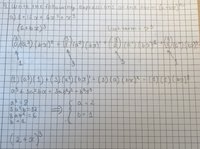A similar, but simpler, problem is "Factor the following as a perfect square". Such a question presumes that it can be done; so it is useless in real life, where you would never have reason to do it when you run across a random polynomial without a teacher giving you instructions ...
Except that sometimes you do! Given a trinomial like 64x^2 - 176x + 121, if the goal is to factor it, you have a lot of work ahead of you if it is a typical trinomial; but you can wonder if it just might happen to be a perfect square, since the first and last terms are perfect squares. So you try it: If it is a perfect square, then it must be the square of (8x - 11), in order to get the first and last terms, and the middle sign, right. So you make a hopeful guess and check it. It is, so you've saved all that work (with no risk at all, since of course you knew enough to check, because you had no reason to assume it is a perfect square -- you just hoped it was).
So this sort of thing is a good strategy, with no risk if you are thinking correctly. As for the OP, if the check failed, you'd just have to say "It can't be done" -- just as the solution to some equations is "no solution". But I agree that the problem ought to say that.
By the way, in writing this, I realized I didn't say everything you have to think about in problem 9(b); there might actually be two possibilities to check, with different signs. It wasn't my intent to give a complete method, just some hints.
Now, if you were to equate coefficients, you would get 4 (or 5) equations in two unknowns, and some students might still forget to check for consistency with that method as well. In effect, my approach just writes the two easiest of the equations, and then promises to check the answer by a slightly easier method.


